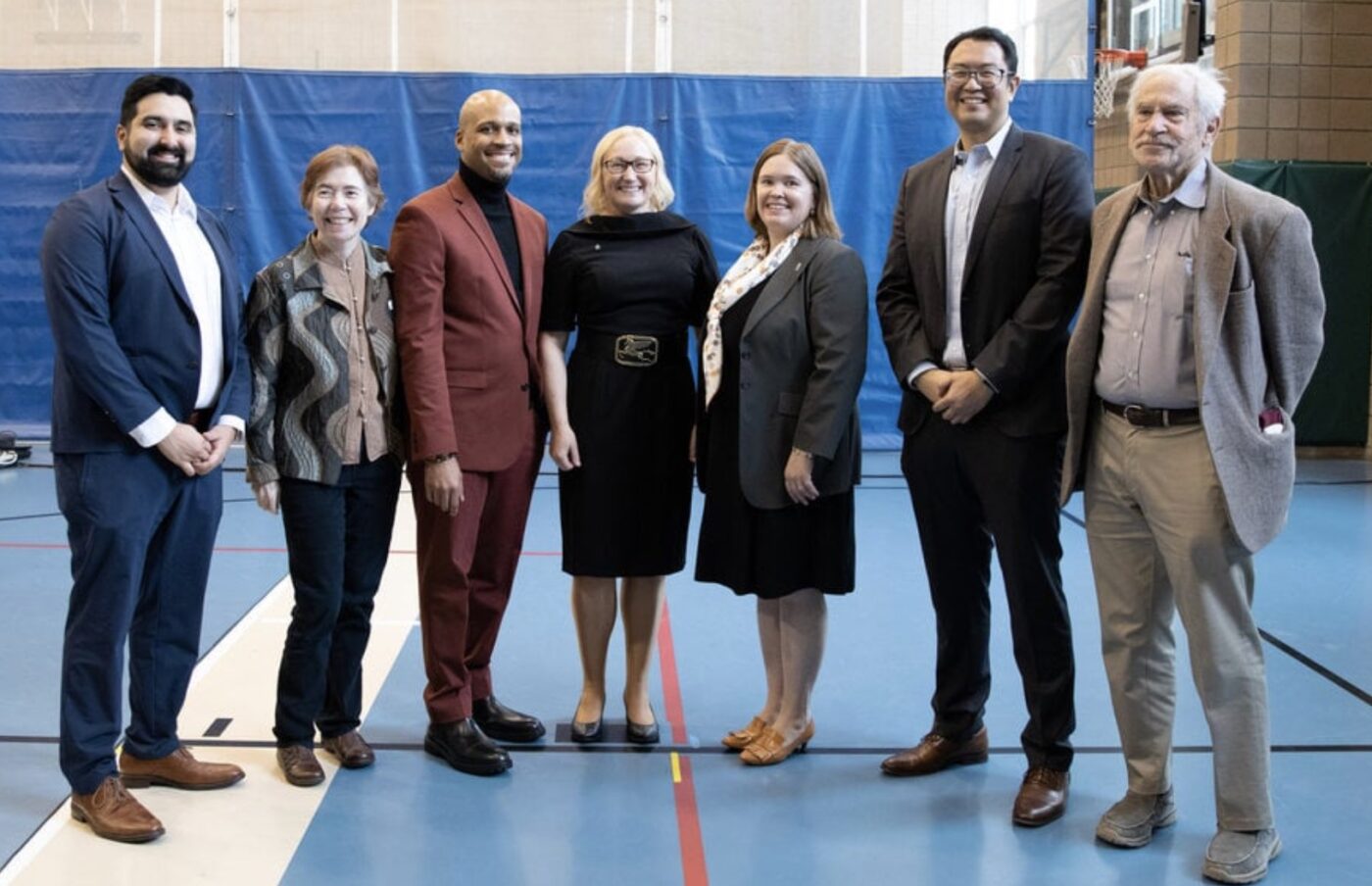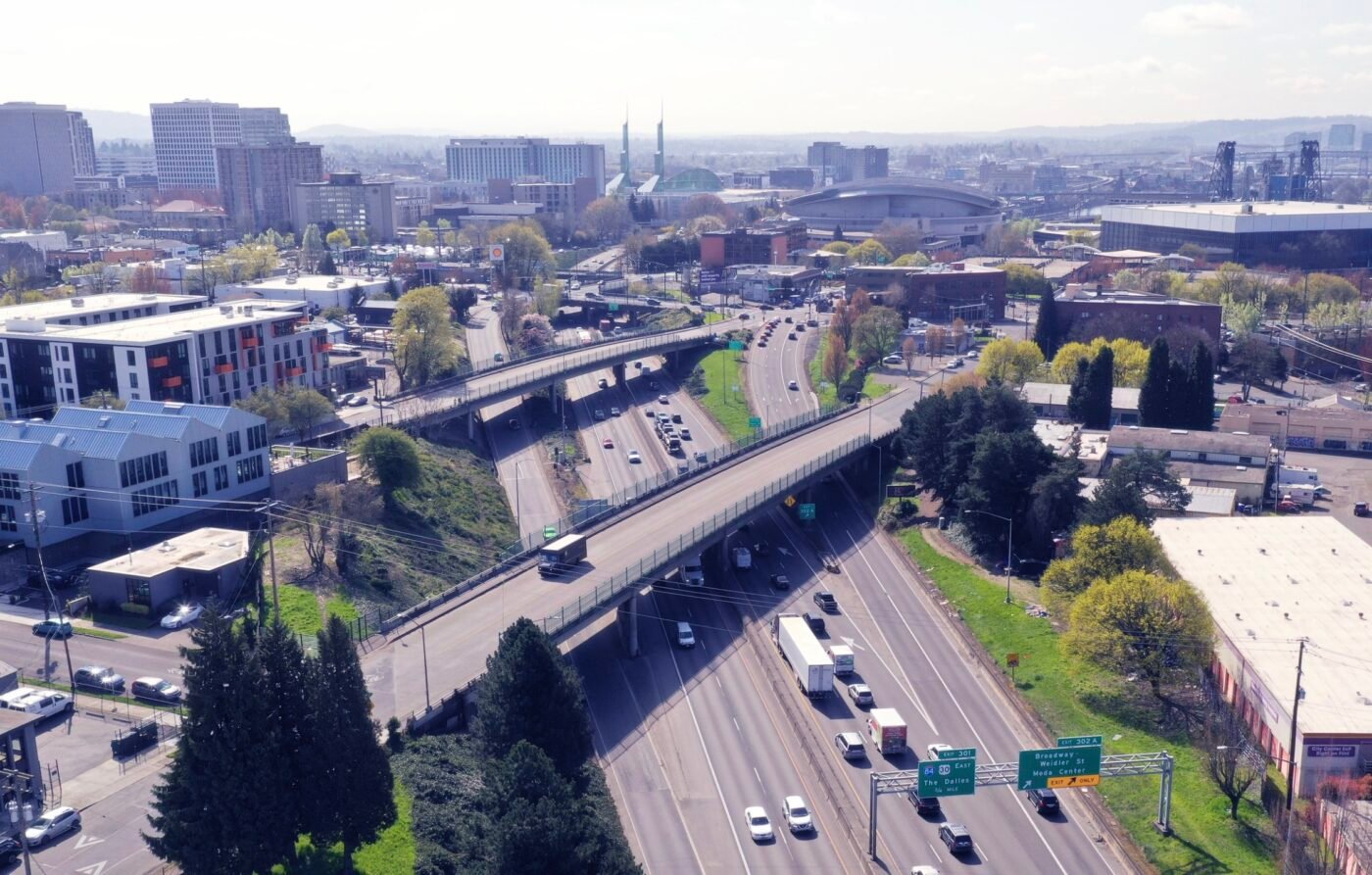Metro Council just voted to give the Oregon Department of Transportation $250 million for the I-5 Rose Quarter project. The vote was a significant step that makes key funds available to ODOT so they can move forward with preliminary construction work this summer.
The vote comes just days after Metro Council members heard strong support for the project from leaders of Albina Vision Trust, a nonprofit working to re-establish the Black community displaced by construction of the freeway in the 1960s, and the owner of Raimore Construction, a minority owned and operated company that will receive contracts to build the project.
In addition to adding lanes to I-5 in a bid to reduce crashes and congestion, the project includes a cover over the freeway that will come with significant changes to the surface streets with a goal to improve bicycling and re-stitch neighborhoods together. The project has been nearly 15 years in the making and has changed considerably since ODOT first shared design proposals. Even with the addition of buildable freeway covers (which happened only through strong advocacy by Albina Vision Trust), folks who oppose the project don’t trust ODOT. They say it’s a wolf in sheep’s clothing and that ODOT is hiding a larger, 10-lane freeway plan. Many opponents want congestion pricing in place prior to any work to widening the freeway, a policy that Metro’s Regional Transportation Plan already endorses.
“Any normal DOT engineer would have proposed nine lanes in each direction at this spot to balance out lanes… This is a tweak”
– Lynn Peterson, Metro Council president
Beyond those concerns, the total unraveling of ODOT’s budget for the project has become an even greater concern of many project skeptics. If the Trump administration continues to freeze around $400 million of an already-promised grant, the budget deficit could balloon to $1.4 billion. Critics say by allowing ODOT to move forward, the state will be on the hook to fully fund the project — siphoning funds from other needs in the process.
At their meeting this morning, Metro council passed the $250 million funding resolution 5-1 with one abstention. ODOT says they now have $863 million lined up for the project, enough to build major elements of the new freeway lanes and about 30% of the highway cover.

“This isn’t just about moving cars, it’s about rebuilding the community that was torn down,” said Metro Councilor Ashton Simpson when he introduced the resolution. “This project represents a significant economic opportunity. It will create thousands of good paying jobs” and “provide contracting opportunities for Black-owned businesses and Black contractors.” The project, Simpson said, will, “Restore the economic vitality that was stolen decades ago.”
“If we are serious about racial and economic equity,” Simpson, who is Black, continued: “Then we must hold ourselves accountable to the voices of impacted communities, and they have spoken clearly in support of this project.”
Councilor Christine Lewis said her “yes” vote should be seen as a sign that Metro can seen as a partner in progress with ODOT. “If we are going to move forward as a partner, working on big things for the state, this is the exact moment when we have to move forward.”
The idea that the time had simply come to do something, anything, to show progress on this project, also rang true for Councilor Gerritt Rosenthal. He expressed misgivings with the project, saying he doesn’t think it will reduce congestion, but that, “It’s necessary to move forward.”
Councilor Juan Gonzalez, who has taken principled stands against freeway expansions in the past, also voted yes this morning. “The action before us is to help program the largest restorative justice project in America. That’s a big deal right now,” he said. Gonzalez sounded proud of how Metro helped “mold” the project from just another freeway expansion into something he thinks, “will achieve so many of our goals across the board.” And similar to councilors Lewis and Rosenthal, Gonzalez said his support is also based on the belief that, “It’s important to send a message to Salem and D.C. that this region can and will build big, beautiful things.”
Councilor Duncan Hwang couldn’t get himself to vote “yes” or “no,” so he abstained. He said he is “deeply supportive” of all the jobs for Black business owners and the reconnection of this historic Albina community; but he also has serious reservations about ODOT’s fiscal irresponsibility. Hwang said he couldn’t live with the double-standard of taking other agencies to task for spending money they don’t have, then turn around and support ODOT doing the same.
Mary Nolan was the only Metro Council member to vote against the resolution. She said, “I find a deep irony that this project intends to repair past harms to the Black community that was caused by highway construction, and the solution is more highway construction. I don’t think that will work as a reparation.” Nolan echoed Hwang when she added that, “I won’t join a chorus that lectures other governments about how to be fiscally responsible — how not to bust their budgets — and then turn around and do exactly the same thing with this project.”
Metro Council President Lynn Peterson is the strongest supporter of them all. She referred to ODOT’s plans for the freeway as a mere “tweak” and said our region should be grateful ODOT isn’t going even bigger. “Any normal DOT engineer would have proposed nine lanes in each direction at this spot to balance out lanes.” “This is a tweak” Peterson continued, “It’s a tweak to give us another option in the future, to be able to reduce fender-benters, increase the safety, be able to mitigate congestion in the future, but also be able to do things with the community in hand that they want, and this cap is part of it. And slowing down at this point would indicate to the state that we are not interested in the cap at all.”
Peterson then addressed concerns with ODOT’s budget:
“There is no money that will be budgeted until there is money in hand. I want to be very clear about that. This is not something that we’re giving permission to the state to go out and sign a contract that they can’t actually commit to. That’s what happened in other situations. That’s why we called them out. This is allowing the project to move forward into the next step. So if no money is in hand, we can expressly move forward as quickly as possible.”
To Peterson, the freeway expansion plans — which call for one new “auxiliary lane” in each direction between I-84 to the south and I-405 to the north — coupled with the cap and surface street elements of the project are a “balanced approach”:
“… That balanced approach is being able to see a little bit of work for the future of the interstate system and our economy, as well as a maximum benefit to the community it goes through. That is what I call an amazing amount of balance. And it was not easy to get to, because it is not the way we normally do business. So I would just try to recognize that we are no longer in the ’70s. We are not fighting that fight. That fight is over. The fight that we have now is to make sure that every project that we invest in, that we spend our time in, has a balanced approach that allows everybody to benefit, not just one part of our community.”
In a statement after the meeting, No More Freeways, a nonprofit group that has organized community opposition and has filed several lawsuits against the project, said, “ODOT will do anything, say anything, promise anything, to get the project started because they know we’ll have to pay whatever it takes to finish it. This is cynical and wrong.”
ODOT says this funding from Metro, coupled with the (still very uncertain) $450 million federal grant and other funds already dedicated to the project, will allow them to get started on the project this summer and begin construction of the freeway expansion and cap in 2027.




